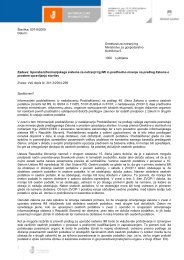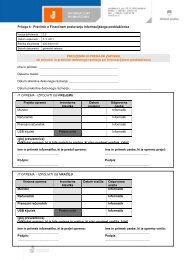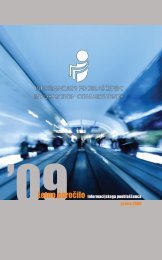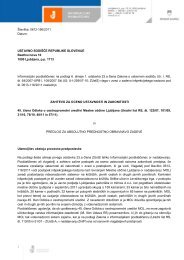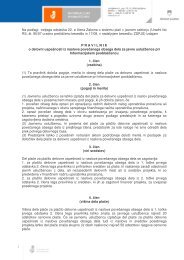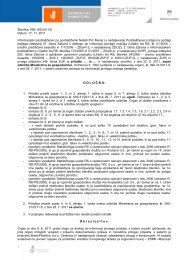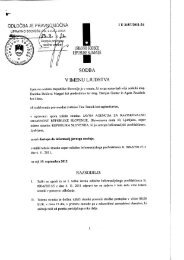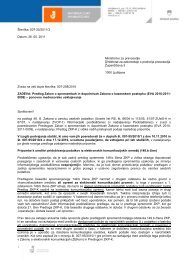Annual Report for the Public Administration 2004
Annual Report for the Public Administration 2004
Annual Report for the Public Administration 2004
You also want an ePaper? Increase the reach of your titles
YUMPU automatically turns print PDFs into web optimized ePapers that Google loves.
31%<br />
10%<br />
2%<br />
21%<br />
bad<br />
average<br />
good<br />
very good<br />
excellent<br />
36%<br />
diagram VIII-3. Level of computer availability in <strong>the</strong> administration<br />
An important criterion <strong>for</strong> <strong>the</strong> development of <strong>the</strong> ICT in <strong>the</strong> public administration is <strong>the</strong><br />
saturation with computers in <strong>the</strong> administrative structures. The saturation with computers in <strong>the</strong><br />
administration is at a high level – 64% of <strong>the</strong> administrations assess it as “good” or “very good”,<br />
while it is assessed with “bad” only by 11 administrative structures (2%). There is no administration<br />
to report that it has no computers.<br />
13% 8%<br />
11%<br />
486 and less<br />
from 75 to 300<br />
from 300 to 600<br />
25%<br />
16%<br />
27%<br />
from 600 to 1 000<br />
from 1 000 to 2<br />
400<br />
over 2 400<br />
diagram VIII-4. Processor frequency of <strong>the</strong> computers in <strong>the</strong> administration<br />
Compared to 2003 <strong>the</strong> number of computers has increased with 11 302 (23%). The<br />
distribution of computers in <strong>the</strong> administration is quite equal but un<strong>for</strong>tunately almost <strong>the</strong> half (46%)<br />
of <strong>the</strong> total number of computers in <strong>the</strong> administration is still with a frequency below 600 MHz which<br />
means that <strong>the</strong>y are obsolete and do not fit <strong>the</strong> needs of <strong>the</strong> e-government.<br />
Their distribution among <strong>the</strong> administrations shows that <strong>the</strong> largest part of <strong>the</strong> old computers<br />
is in <strong>the</strong> central administration (13 236) and in <strong>the</strong> administrative structures established with a law<br />
(8 030), while in <strong>the</strong> regional administration <strong>the</strong>y are only just 394. It should be noted as well that<br />
38,62% of <strong>the</strong> computers in <strong>the</strong> municipal administrations (3 657 out of 9 469) are also in this<br />
category.<br />
VIII.4. Local Area Networks<br />
According to <strong>the</strong> data received only 50 of <strong>the</strong> administrations (10,82%) have reported not to<br />
have local area network. The remaining 412 (89,18%) administrative structures report to have such.<br />
Only 95 (or 20,56%) of <strong>the</strong> administrative structures are connected to <strong>the</strong> public<br />
administration network (NAMDA), while <strong>the</strong> remaining 367 (79,44%) are not connected. 22 regional<br />
administrations and 205 municipal ones indicate that <strong>the</strong>y are not connected to <strong>the</strong> public<br />
administration network.<br />
VIII.5. Electronic in<strong>for</strong>mation exchange<br />
The use of an electronic signature and electronic documents in <strong>the</strong> administration has grown<br />
considerably as compared to <strong>the</strong> previous year. Only one month after <strong>the</strong> compulsory introduction<br />
<strong>2004</strong> <strong>Annual</strong> <strong>Report</strong> <strong>for</strong> <strong>the</strong> <strong>Public</strong> <strong>Administration</strong> 87






